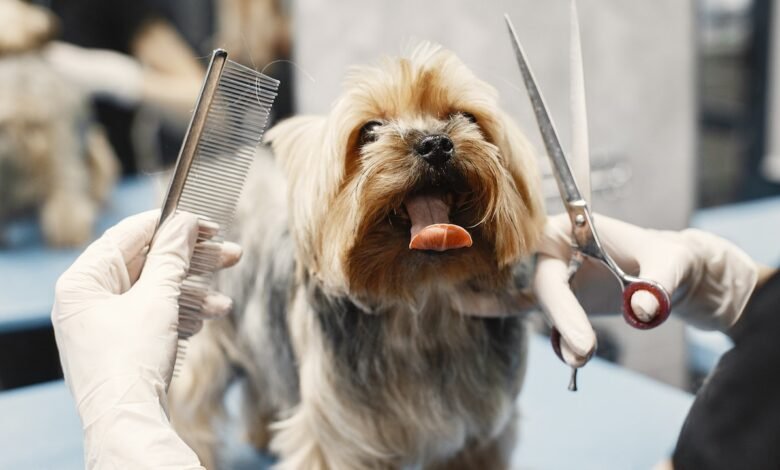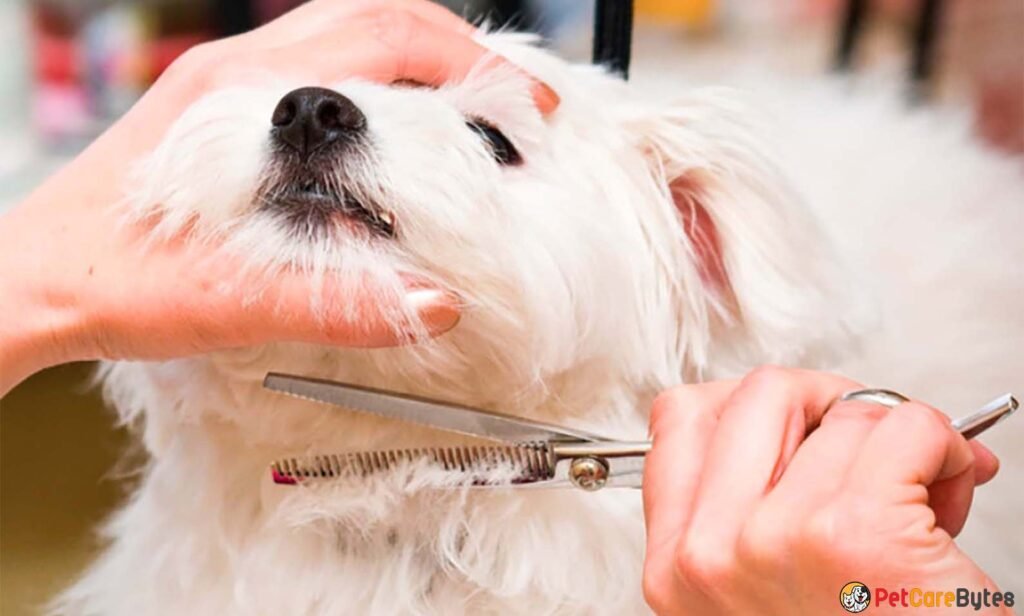
The Role of Grooming in Pet Care: Maintaining Hygiene and Appearance
When it comes to pet care, grooming plays a vital role in maintaining the hygiene and appearance of our beloved furry friends. Grooming goes beyond simply making pets look clean and presentable; it contributes to their overall health and well-being. In this article, we will explore the importance of grooming, its numerous benefits, different grooming procedures, and tips for pet owners to ensure their pets receive the best grooming care possible.
Read More: Grooming Tips for Your Pet During the Summer 2023
The Role of Grooming in Pet Care

Grooming is an essential aspect of pet care as it helps prevent various health issues. Regular grooming sessions allow pet owners to examine their pets closely, enabling them to spot any abnormalities such as skin infections, ticks, or fleas. Grooming also helps in early detection of lumps, bumps, or skin irritations that may require veterinary attention. Additionally, grooming promotes blood circulation and stimulates the production of natural oils, keeping the pet’s coat and skin healthy.
Benefits of Grooming for Pets
Proper grooming offers a multitude of benefits for pets. Firstly, it helps to maintain a clean and fresh coat, preventing matting, tangling, and odor. Grooming also reduces shedding, keeping the pet’s environment cleaner and reducing the risk of allergies for both pets and their owners. Regular brushing and bathing remove dirt, debris, and dead hair, preventing them from being ingested and causing digestive issues. Furthermore, grooming can help improve a pet’s overall temperament and behavior, as it provides a positive sensory experience and reduces anxiety.
Types of Grooming Procedures
Grooming procedures encompass various aspects of pet care. The most common procedures include regular brushing and bathing, nail trimming and paw care, ear cleaning, and dental hygiene. Regular brushing not only removes loose hair and prevents matting but also distributes natural oils, resulting in a healthier coat. Bathing helps remove dirt, allergens, and parasites, while nail trimming and paw care prevent overgrowth and discomfort. Ear cleaning and dental hygiene are essential for preventing infections and maintaining oral health.
Regular Brushing and Bathing
Brushing and bathing are fundamental grooming practices for pets. Brushing should be done at least once a week for most pets and more frequently for long-haired breeds. It helps to remove loose hair, prevent tangles, and distribute natural oils. When bathing your pet, use pet-friendly shampoos and warm water. Be cautious not to over-bathe your pet, as it can strip their coat of essential oils and cause dryness.
Nail Trimming and Paw Care
Keeping your pet’s nails trimmed is crucial for their comfort and mobility. Overgrown nails can cause pain and difficulty in walking. Regular nail trimming, along with paw pad care, helps prevent nail breakage and provides better traction. If you are uncertain about nail trimming, consult a professional groomer or your veterinarian for guidance.
Ear Cleaning and Dental Hygiene
Proper ear cleaning and dental hygiene are essential for maintaining your pet’s overall health. Regularly check your pet’s ears for signs of infection or excessive wax build-up. Clean them using veterinarian-recommended ear cleaning solutions and follow the instructions carefully. Dental hygiene should not be overlooked either. Brushing your pet’s teeth regularly with a pet-specific toothbrush and toothpaste can help prevent tartar buildup and maintain healthy gums.
Grooming for Different Breeds
Different breeds have unique grooming needs. Long-haired breeds often require more frequent brushing to prevent matting, while short-haired breeds benefit from regular grooming to remove loose hair and debris. Breeds with wrinkles or skin folds may require extra attention to prevent moisture buildup and infections. It is crucial to research and understand your pet’s specific grooming requirements based on their breed and coat type.
Grooming Tools and Products
Using the right grooming tools and products can make the grooming experience more efficient and enjoyable for both pets and owners. Invest in high-quality brushes, combs, and deshedding tools suitable for your pet’s coat type. Choose pet-friendly shampoos and conditioners that cater to their specific needs. Additionally, consider using grooming wipes, dental chews, and other grooming products recommended by professionals.
Professional Grooming Services

While regular at-home grooming is essential, professional grooming services can provide additional benefits. Professional groomers have expertise in handling different breeds and can provide specialized services such as breed-specific haircuts, deep coat conditioning, and specialized treatments. They also have access to professional-grade tools and products that may not be readily available to pet owners. Consider scheduling regular grooming appointments based on your pet’s needs and consult with groomers for advice on specific concerns.
Grooming Tips for Pet Owners
As a pet owner, there are several tips to ensure successful grooming sessions. First and foremost, start grooming your pet at an early age to familiarize them with the process gradually. Use positive reinforcement, treats, and praise to create a positive association with grooming. Take breaks if needed and be patient with your pet. Regularly check for any skin abnormalities, parasites, or signs of discomfort during grooming. If you encounter any issues, consult your veterinarian for guidance.
Common Grooming Challenges
Grooming can sometimes pose challenges, especially for pet owners who are new to the process. Some common challenges include handling pets who are fearful or anxious during grooming, dealing with matting or excessive shedding, or managing grooming tasks that require specialized techniques. If you face any difficulties, seek advice from professional groomers, trainers, or veterinarians. They can provide guidance, recommend appropriate grooming techniques, and suggest strategies to make grooming a positive experience for both pets and owners.
Grooming as a Bonding Activity
Beyond its practical benefits, grooming can be a meaningful bonding activity between pets and their owners. It provides an opportunity for quality one-on-one time, promoting trust, affection, and a stronger human-animal bond. Engage in gentle brushing, massage your pet’s coat, and speak in soothing tones to create a relaxed and enjoyable grooming experience. This time together strengthens your connection and fosters a sense of well-being for both you and your pet.
Read More: 3 Benefits of Regular Pet Grooming
FAQs
1. How often should I groom my pet? It depends on your pet’s breed and coat type. Most pets benefit from weekly brushing and regular bathing. However, consult your veterinarian or a professional groomer to determine the ideal grooming frequency for your pet.
2. Can I use human shampoos on my pet? No, it is not recommended to use human shampoos on pets. They have different pH levels, and certain ingredients can be harmful to animals. Use pet-specific shampoos that are formulated for their specific needs.
3. How do I make grooming a positive experience for my pet? Start grooming your pet at a young age and use positive reinforcement techniques such as treats and praise. Gradually introduce them to grooming tools and always be patient and gentle. If your pet shows signs of anxiety or fear, consult with a professional trainer or behaviorist.
4. Should I groom my pet at home or seek professional grooming services? Regular at-home grooming is essential, but professional grooming services can provide specialized care and expertise. Consider both options based on your pet’s needs and consult with professionals for advice and guidance.
5. How can I prevent matting in my pet’s coat? Regular brushing is the key to prevent matting. Use appropriate brushes and combs for your pet’s coat type and establish a brushing routine. For severe matting, seek professional help to prevent discomfort and potential skin issues.
Conclusion
Grooming is an integral part of pet care, contributing to the overall health, hygiene, and appearance of our furry companions. Regular grooming sessions help prevent health issues, keep the coat and skin clean, reduce shedding, and promote better behavior. By understanding the importance of grooming, learning the appropriate procedures, and using the right tools and products, pet owners can provide optimal grooming care for their pets. Remember to approach grooming as a bonding activity and seek professional assistance when needed.







One Comment